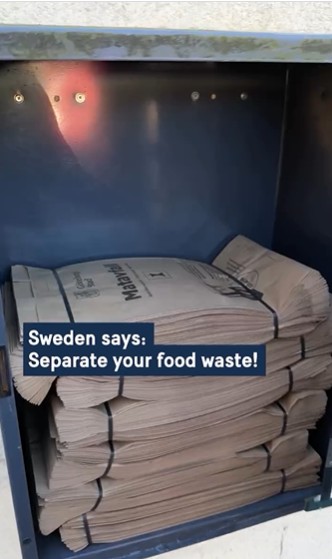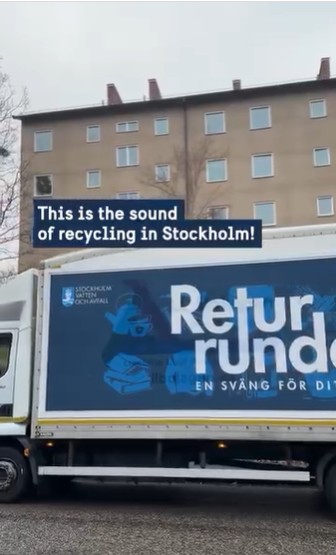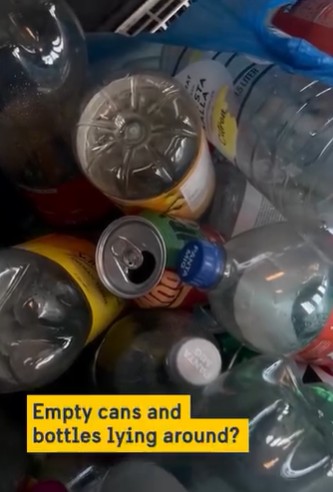Swedish recycling and beyond
Sweden is aiming for zero waste, through laws and encouragement. This is how.
A long history of recycling
Swedish recycling history goes back quite some time. Households started sorting waste in the 1980s – first glass, then paper and cardboard followed suit. Plastic recycling got going in the 1990s and Sweden introduced recycling stations.
A recycling boost came with the 'producer responsibility' implemented in 1994. This made all businesses that produced, imported or in any other way put packaging material on the Swedish market responsible for its waste collection and recycling.
Then, in the early 2000s, Sweden banned the disposal of household waste through landfills as a way to encourage more environmentally responsible waste management. Since then, the country has improved its waste management through increased recycling and incineration of waste for energy recovery.
Today, the producer responsibility includes making products that are resource-efficient, easy to reuse and recycle, and free from harmful substances.
Recycling in Sweden – key figures:
- Households and businesses generated 4,100,000 tonnes of municipal waste was managed in 2023, which equals 392 kilos per person.
- Around 39% was recycled and 59% was turned into energy.
Source: Swedish EPA
Everyone must separate their food waste – by law
A Swedish law from 2024 declares that everyone must separate their food waste – this goes for households and businesses alike. It's also manadatory for all of Swedens local authorities to provide separate collection of food waste.
This had already been done for years in many parts of the country, but it hadn't previously been regulated by law.
Food waste is a great source of energy and is used, among other things, as biogas – to replace fossil fuels.
Swedish circular thinking
One way forward in Swedish recycling is to increase reuse and repairs of consumer products. And over the years, the movement of sharing and reusing all kinds of things, clothes and furniture, has grown enormously.
Circular economy is an approach that involves using products that can be reused completely, a so-called cradle-to-cradle approach. Ever since 2018 Sweden has even had a special advisory group for circular economy, Delegationen för cirkulär ekonomi (link in Swedish), to help make circular economy a key part of government policy.
Some examples of Swedish recycling progress
- In 2017, the Swedish government reformed the tax system so that people could get cheaper repairs on used items.
- In 2024, textile recycling company Syre was launched. Syre focuses on textile-to-textile recycling of polyester and was co-founded by fashion company H&M and investment company Vargas Holding. From H&M's perspective, this initiative is expected to increase the company's share of textile-to-textile recycled polyester, as opposed to bottle-to-textile. Syre expects first sales in 2026 and worldwide production by 2032.
- Researchers are also working on finding other new clothing materials that are less damaging to the environment.
Achieving responsible waste management
One part of responsible waste management is to change habits and everyday behaviour. One way to go about that is through ‘nudging’, making small changes to people’s surroundings and lifestyle to help them live sustainably.
Research has shown that people recycle more when disposal is easier and more convenient. For example, Sweden has set standards for recycling stations to always be placed reasonably close to residents. And some local authorities try mobile options, such as Stockholm's 'Returrundan' featured in the video below.
The pant system
Sweden has long had a can and bottle deposit system that gives people money back when they recycle – since 1984 for aluminium cans, and since 1994 for plastic bottles. Each year Swedes recycle nearly 3 billion bottles and cans using the so-called pant system. It even has its own verb in Swedish, panta.
Doing the dirty work
Sweden’s reuse revolution would not be possible without those who do the literal dirty work of handling Sweden’s rubbish.
The Swedish Waste Management Association works to facilitate the move towards a circular economy, where people use products for longer and in smarter ways. This includes motivating and guiding citizens and consumers to change their behaviour. But it's also about providing the infrastructure needed for people to do the necessary sorting for themselves.
The climate crisis has also led Sweden to use waste in resourceful ways, such as powering everything from buses to apartment heating systems. Rubbish is burnt in low-carbon incinerators and food waste is turned into climate-friendly biogas fuel.



